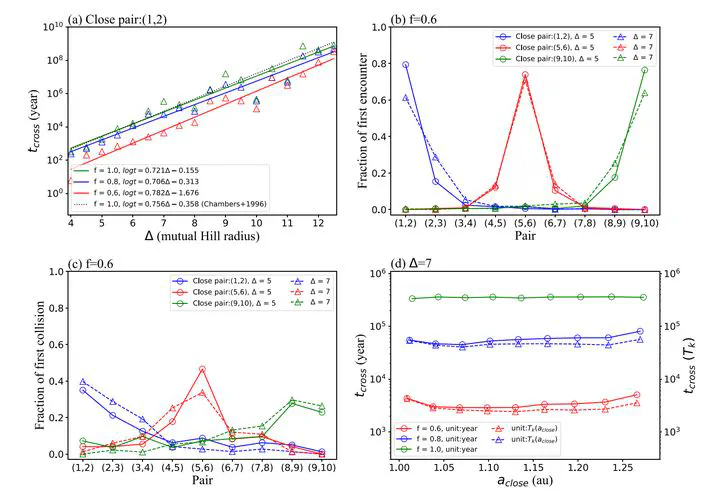The stability of unevenly spaced planetary systems
Aug 15, 2023· ,,,,,·
1 min read
,,,,,·
1 min read
Sheng Yang
Liangyu Wu
Zekai Zheng
Masahiro Ogihara
Kangrou Guo
Wenzhan Ouyang
Yaxing He
 The money plot
The money plotAbstract
Studying the orbital stability of multi-planet systems is essential to understand planet formation, estimate the stable time of an observed planetary system, and advance population synthesis models. Although previous studies have primarily focused on ideal systems characterized by uniform orbital separations, in reality a diverse range of orbital separations exists among planets within the same system. This study focuses on investigating the dynamical stability of systems with non-uniform separation. We considered a system with 10 planets with masses of 10-7 solar masses around a central star with a mass of 1 solar mass. We performed more than 100,000 runs of N-body simulations with different parameters. Results demonstrate that reducing merely one pair of planetary spacing leads to an order of magnitude shorter orbital crossing times that could be formulated based on the Keplerian periods of the closest separation pair. Furthermore, the first collisions are found to be closely associated with the first encounter pair that is likely to be the closest separation pair initially. We conclude that when estimating the orbital crossing time and colliding pairs in a realistic situation, updating the formula derived for evenly spaced systems would be necessary.
Type
Publication
Icarus
We investigate a system consisting of 10 non-uniformly spaced, circular and coplanar planets of equal mass. The system is modified by changing the distance between only one pair of planets. We conducted multiple numerical experiments under each condition with different reduction factors and initial orbital separation.